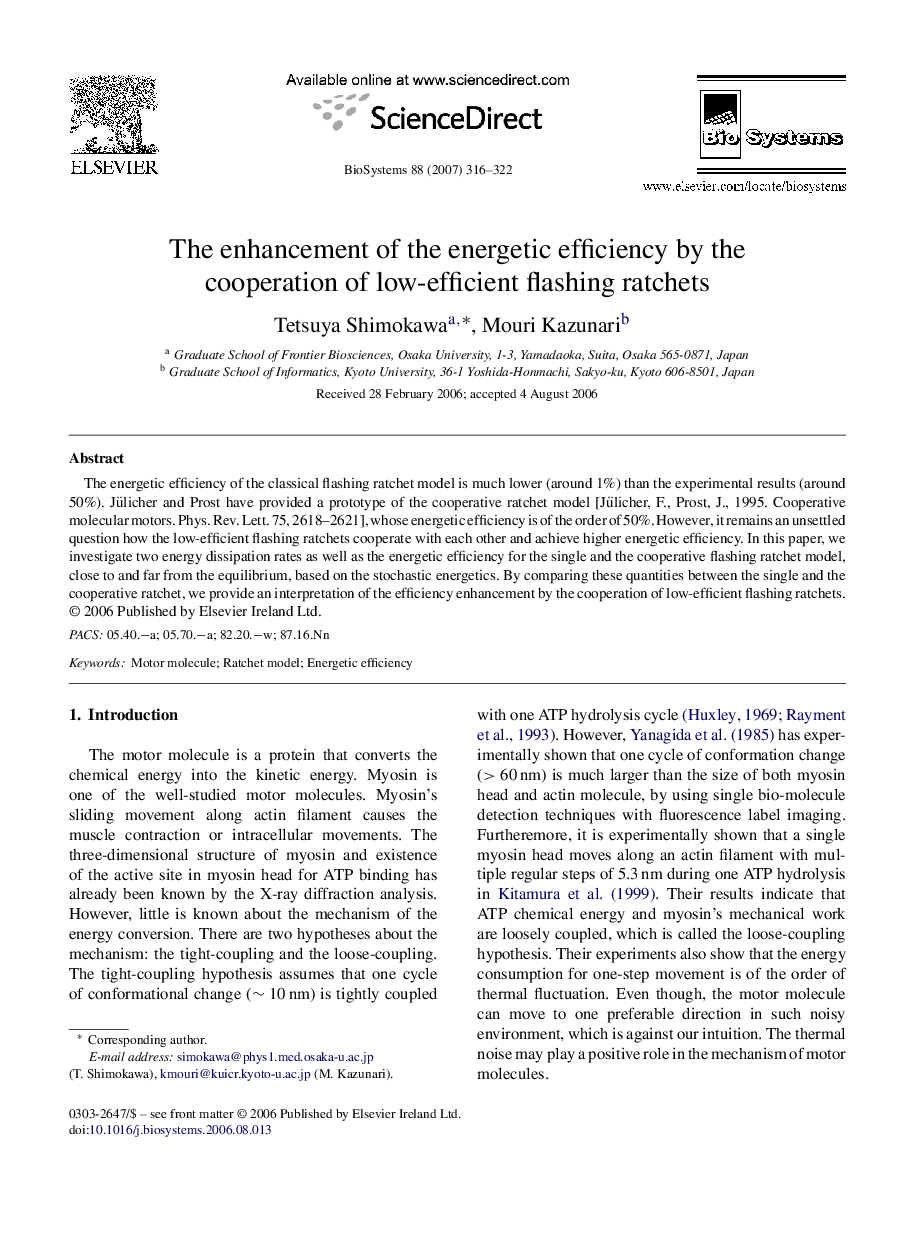| Article ID | Journal | Published Year | Pages | File Type |
|---|---|---|---|---|
| 2077192 | Biosystems | 2007 | 7 Pages |
Abstract
The energetic efficiency of the classical flashing ratchet model is much lower (around 1%) than the experimental results (around 50%). Jülicher and Prost have provided a prototype of the cooperative ratchet model [Jülicher, F., Prost, J., 1995. Cooperative molecular motors. Phys. Rev. Lett. 75, 2618-2621], whose energetic efficiency is of the order of 50%. However, it remains an unsettled question how the low-efficient flashing ratchets cooperate with each other and achieve higher energetic efficiency. In this paper, we investigate two energy dissipation rates as well as the energetic efficiency for the single and the cooperative flashing ratchet model, close to and far from the equilibrium, based on the stochastic energetics. By comparing these quantities between the single and the cooperative ratchet, we provide an interpretation of the efficiency enhancement by the cooperation of low-efficient flashing ratchets.
Related Topics
Physical Sciences and Engineering
Mathematics
Modelling and Simulation
Authors
Tetsuya Shimokawa, Mouri Kazunari,
